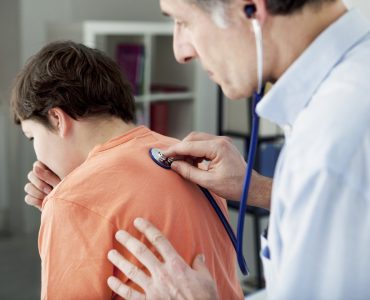Diagnosis
When you contact your GP for a sprain or a strain injury, he will ask you about how you got injured, which treatment has been undertaken till then and which medications have been taken. He will also examine the injury site and the affected muscle or joint, to assess the severity of the damage. He will do a detailed assessment of the below points:
Pain, sensitivity and discomfort in the injury site
Swelling or inflammation
Any abnormal bumps or lumps
Bruising in the muscle or joint
Range of movement in the affected joint or muscle
Whether the injured muscle or joint can bear weight.
In a severe sprain, the GP will gauge the looseness or tightness of the ligament; this is referred as joint instability, ligamentous laxity or mechanical instability.
Most sprains and strains do not require X-rays. However, the GP may get an X-ray done if there is difficulty in movement of the joint, there is tenderness in the bones of ankle, leg or foot at some points; or there is inability to bear weight on the foot, leg or ankle. An x-ray would be recommended anyway if you are 55 years and you suffer a serious knee injury.
Prevention
The following measures can help prevent sprains and strains
Regular exercise regime including muscle strengthening and stretching keeps the joints flexible and reduces risk of injury. One key point here is that warming up properly before an exercise is most important to prevent sprains and strains.
While recovering from an injury and getting back to normal activity, keep the injured area such as knee, ankle, elbow or wrist taped, strapped or wrapped to avoid getting injured in the same area. However, this is only a short-term measure. For a long-term solution, one needs to work on strengthening and conditioning the muscles around the joint.
Footwear should be appropriate so as to protect and support the ankles and feet during a sport, at work or at home. High-heel footwear is more likely to cause ankle sprains. Also avoid wearing shoes which are worn-out especially from one side
Avoid walking or running on uneven and bumpy surfaces
Avoid exercising or sport activities when exhausted
Take necessary precautions to avoid falls – keep the walkways, stairs, driveways free of obstacles which can make one trip-over and fall.
Complications
Fractures – if a sprain or strain is accompanied with the following symptoms
Excessive bruising,
Lot of swelling,
Abnormal and unusually occurring bumps and lumps,
Inability to bear weight and
Pain and sensitivity in a place different from the injury site,
It is an indication of a fracture.
Dislocated joints – this is another complication possible with sprains and strains
Ankle Sprain – can have complications like recurring pain and swelling especially on the lateral side of ankle.
Tendon rupture – if a strained muscle fails to improve or tighten, it could be a case of ruptured tendon.
Cartilage injury – if the twisting of knee causes a tearing feeling and severe pain, later, it can be a case of cartilage damage.
In case of complications, your GP can refer you to the accident and emergency department in the hospital or an orthopaedic specialist for bones, joints and muscles, these may include below:
A possible dislocation or fracture
Adverse effect on circulation or nerves
Tendon rupture
Wound affecting the joint
A bleeding condition or history of DVT or deep vein thrombosis
Partial or complete muscle tears
Septic arthritis (joint getting infected with bacterial infection), intramuscular haematoma (formation of a big blood clot in the muscle) or haemarthrosis (bleeding into the joint).
Sprains and strains – 2

Let us know if you liked the post. That’s the only way we can improve.










